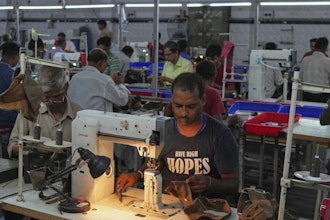There are many reports about the reshoring movement and how many manufacturers are moving plants back from when they off-shored to China in the 80s and 90s back to US soil. However, we are also seeing a rise in companies moving from China to Mexico, for many reasons.
Mexico vs China Manufacturing: Who Has the Upper Hand in the Great Battle for Manufacturing Dominance?
From Government Policy to Human Capital, Advantage: China
China’s government is not only setting up high level manufacturing policy, but a full set of incentives from top government to the local government in the form of Industrial Park. That is a full service to enterprises from building facility in the Park (even subsidizing all the facility cost), local market development, and incentives such as taxation. For human capital, there are over 2,000 universities and colleges, with more than six million enrollments in total each year. In engineering, it is estimated 10,000 Ph.D. graduates in China last year alone. Comparatively, this spring 2014 the U.S. will graduate about 8,000 Ph.D. engineers, an estimated two-thirds of whom are not U.S. citizens. About 150,000 of those students who majored in engineering, computer science, information technology, and math will collect bachelor’s degrees. For advanced human capital with a global view, 194,029, or 25.4% of International Students in the United States, are from China. Most of them are coming back to China for better job development today.
For general labor, China has around 800 million workers available in the labor market with 9.12 millioin students taking the National Higher Education Entrance Exam every year and going into job market. In junior high, it is 99.7%.
I do not see Mexico having this type of vision and execution power from a government stand point.
The Debate Boils Down to Costs and Inventory Management, Advantage: Mexico
Actually I believe this question has two components: Manufacturing Costs and Inventory Management. China has competition from many places (including Mexico) due to the increased Chinese labor costs and lower labor availability, due to the changing demographics of the workforce, with many Chinese suppliers starting up sister companies in Vietnam and surrounding areas. However it is in inventory management that Mexico has a huge advantage. It is very difficult to reduce inventory turns and manage obsolete inventory generation with overall lead times from Asia, whereas items produced in a border Maquiladora can be in a US DC in less than 12 hours.
Mexico vs China Manufacturing Shipping and Logistics Costs. Advantage: Mexico
The difference in comparative shipping cost between Mexico and China has become exacerbated in recent years due to the rise in oil prices. The average cost differentials by year to ship a 40 ft container to the U.S. East Coast from Mexico and China are represented in figure 2 below. Due to distance, customs, and importation the difference in time in transit from Mexico to the U.S. and China to the U.S. can be as many as 3 weeks. The North American Free Trade Agreement (NAFTA) allows goods produced in Mexico to flow northbound across the U.S. border quickly and efficiently.
Better Logistics and Inventory Costs in Mexico, But the Manufacturing Prowess is Deeper than Just Cost, It’s About Desire. Advantage: China
There is quite an advantage here in the way of logistics and inventory cost in Mexico manufacturing. El Paso has been the backyard of manufacturing since the 1990s for companies like Dell who run heavy production lines in Texas. So, Mexico has been a DC hub for the US for quite some time.
But, in order for Mexico to displace China as a major manufacturing hub, the argument is deeper than just labor cost. The low labor costs in Mexico are available, but not sufficient. There are many countries with large populations with low labor costs like Indonesia, Malaysia, and the Philippines but industrialization has not taken hold. The engine to industrialization is desire. Having prowess in both education and manufacturing require a lot of hard work and discipline. If you remember history, let’s look at Japan and the 4 little dragons (Hong Kong, Singapore, South Korea, and Taiwan). They all meet that hardworking criteria. China was surrounded by this culture for hundreds of years and the desire to get rid of poverty was finally released in the 1980s after 60 million people were dead in the cultural revolution tragedy.
China’s cost started to rise circa 2004 and more companies started to move manufacturing facilities to neighboring countries like Vietnam, especially in the textile industry. It worked similarly to how Taiwan brought up China factories: send a full team from top management to the front line supervisors to setup and operate the factory. In the case for the increase in companies setting up Mexican manufacturing facilities, the model to bring Mexico up by adapting the same model is workable, however, the US manufacturing players, cannot duplicate what Taiwan or China companies did in order to make mature and sustainable sister US factories in Mexico, as the desire is not in the Mexican citizens as it was in the Chinese and the government is not pressing it as diligently.
The Rise of Mexico Manufacturing not a New Idea, as China’s Wages Rose, but In most Industries, The Consumer is the Driving Force
More than 10 years ago it felt almost assured that Mexico would be the major manufacturing hub of the U.S. due to its geographic location and large number of Mexican population working in the U.S. already. It’s even predicted that those Mexican workers will flow back to their homeland because of job opportunities. The fact is, the in-flow rate decreased but the out-flow rate id not increase. China emerged and replaced Mexico and turned the manufacturing wave to the Mainland China.
There is no question that companies follow their customers as well. China in terms of consumption power is a better market than Mexico, besides talent development as previously mentioned. Companies, from the U.S., Taiwan, Japan, or else, have continuously invested in foreign companies, e.g., South Africa (esp. IT companies), Vietnam, Russia, Indonesia, etc. as they are more attractive than Mexico. Regardless, there are challenges and learning curves for foreign investors. Some people are optimistic and predicting that manufacturers are returning to the U.S., but in reality, it may be more correct to say that companies are becoming more global, they hang several flags, and not only the one of their homeland. Honda built manufacturing sites in the U.S., BMW has had a hub in South Carolina for years and has been growing, GE continuously invests in overseas markets, and these are just a few examples. Therefore, the real argument is not Mexico vs China manufacturing, but that it is now critical that the modern working population (and the leaders of the great manufacturing companies) must carry global mindsets.
As Global Manufacturing Thinking and Long-term Sustainability is the Focus for Manufacturing, the U.S. is Still a HUGE Consideration for Reshoring
Throughout the discussion, there were really good points in the debate, but in the end, when talking about a reshift of manufacturing, the US still presented a strong case and will see reshoring of some of those manufacturing facilities. The group was quite optimistic about re-industrialization in US . Here are some important notes from the group:
- The majority of US folks are very hard working and proud with the US still having the 2nd largest manufacturing output in the world, just slightly smaller than China
- US has the lowest energy cost, and expects it to lower over time its dependency on foreign energy with the rise of fracking in the oil & gas industry.
- US has very cheap land cost, reasonable labor cost due to high productivity, and lower quality cost
- “Made In USA” are heralded as good products and service quality
- US has creativity and ability on innovation
- US manufacturing has the “closeness” factor to a large percentage to the world’s consumers
- The US has a spirit of collaboration in development for technology and new products to manufacture
- The US has very efficient communication infrastructure
- America has a strong resolve and adapts well (i.e. a good mentality in following money). Money drives. IT innovation after Japan in 90s is a good example
Yes, industry will have to move back (reshoring) in a different way from what it was moved out (offshoring). That is not just an observation but a mathematical result where moving is cost. That equation enforces that the new industrial chain “moved back” or “Reshored” will have to outperform the current chain in a more productive manner.
Conclusion in the Discussion around Reshoring, Mexico vs China Manufacturing, It’s all About the Customer
In conclusion the group settled on that the process to move manufacturing and reshift, is going to be a slow process, whether it’s from China to Mexico, to the US, or the facility stays in China. Another great final note is the notion that all manufacturing should focus on customer service from now on. Find out why the customer next to you does not place an order to you but finding sources thousands miles away. Take the global sources as your resources. That means your competitor is sharing the same cost structure with you. If your competitors have similar cost structures to you but you still cannot deliver to the customer in the same cost or better, all while your facility is closer to your customer, that means you need to look at all facets of your business, such as logistics, to make sure you are running the facility as effectively as possible. Find out what your issues are, find a solution, such asoutsourcing any non-core manufacturing competencies to companies who can help you scale in order to stay competitive. In the end, it’s all about the consumer. We Americans follow money. That money, and consumers focus on getting a produce fast, of high quality, at a great price will end up dictating the move of manufacturing back.






















